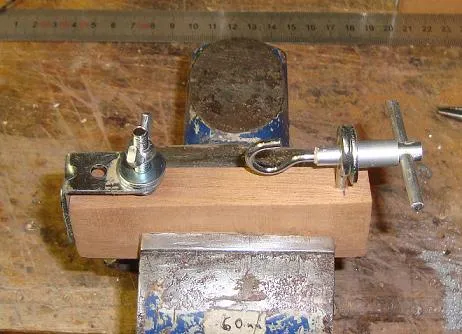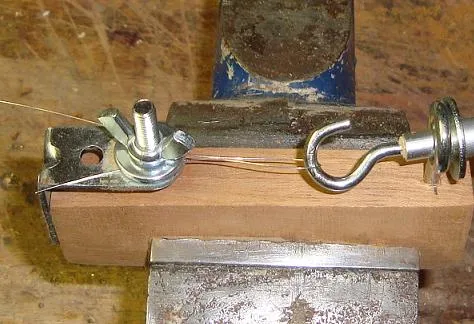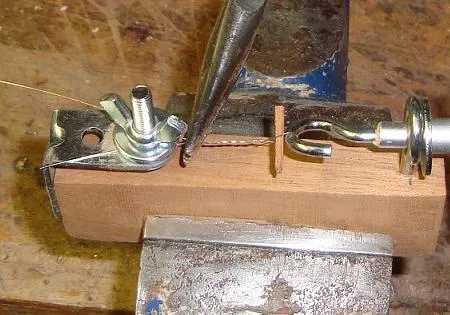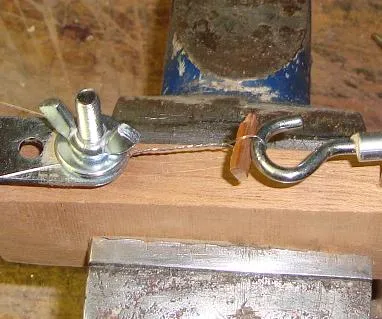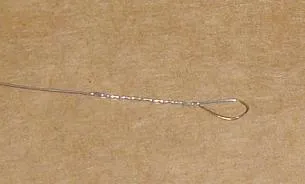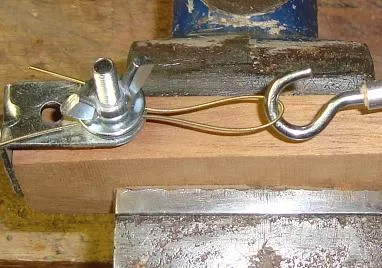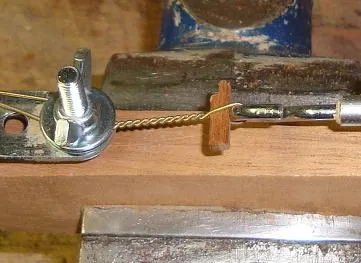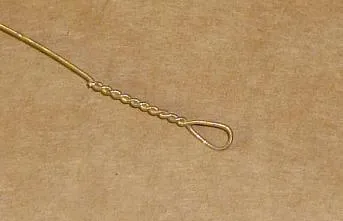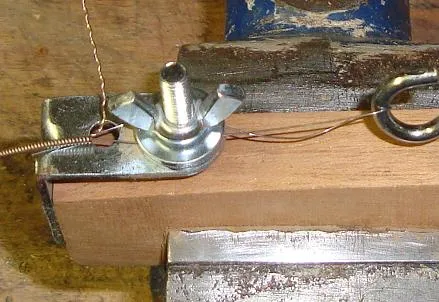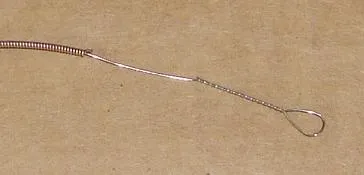|
Double-loop strings for the Waldzither |
|
|
The one disadvantage about the waldzither is that the
strings have a loop at each end. These can be bought commercially
in few places, but they tend to cater for just a couple of
standard scale lengths, and there is a wide variety of scales, and
so string lengths, within the waldzither family. The best solution
is to wind your own.
To this end I have produced a fairly simple and cheap jig on which to wind string loops. I have also found this extremely useful when buying strings for bouzoukis and citterns. Again there are a great variety of string lengths and gauges needed, and one is often forced to buy guitar strings to get the correct gauge. Unfortunately these are usually ball-end strings, and the loops tend to be very small. Now I tend to cut them off and rewind my own loop. |
|
|
|
This is the simple string-loop winder that I have
come up with. It is designed to be used in a vice, but otherwise
you need no other tools except a pair of wire snips.
Cost 20 euros plus postage |
|
Winding a string loop |
|
|
|
|
|
Start by threading the string either side of the bolt, and around the winding loop. Tighten the butterfly nut, whilst pinching the two strands of string together on the hook side of the nut. |
Begin turning the hook to put a loop into the string. |
|
|
|
| If the strings slip in the butterfly clamp, fine strings for example, you can hold them more securely with a pair of fine nosed pliers. As the loop is formed, insert a small wedge-shaped piece of wood before the loop becomes too small. Experience will show you how big a piece. | Keep turning until the loose string is taken up by the winding. If you wind too much the string will begin to first buckle, and then snap. A twist length of about 15mm is quite adequate. |
|
|
|
| To free the string, open the butterfly nut, remove from the hook, and then remove the small wedge. Bend out the loose end and snip off. | It is possible to wind loops in wound strings in the same way, provided they are not too thick. Use you judgement as to what will fit easily around a string post or loop as a loop. |
|
|
|
| Again, wind until the visible string in the winder is taken up by the twist. You will need many less winds with thicker strings. | The result is quite useable. |
|
|
|
| For thick strings, usually over .040, I remove the winding, and create a loop in the core. Unwind as little as possible of the winding, just enough to fit into the clamp, and snip off the outer string before twisting. | On this one you can see the effect of baring too much of the core... the loop is a little too far from the wound string. |
|
NB In order
to wind the second loop in any string, lower the bridge,
attach the first loop at the tail, and loop the end to receive the
second loop around the string hook at the head. This way you know
it will fit well. HOWEVER,
before doing this, make sure the top string hook is between
10-15mm from the bottom. The string will 'shrink' when the loop is
made because of the winding. If you start with the top hook at its
lowest point, the string will be too short!! The thicker strings
will tend to 'shrink' and little more.
If you do have a problem fitting the string, then attach the bottom loop, and use a pair of pliers to grip the top winding, and hook it over the string hook. Again, experience doing this helps. Any problems, let me know! Good luck. |
|
